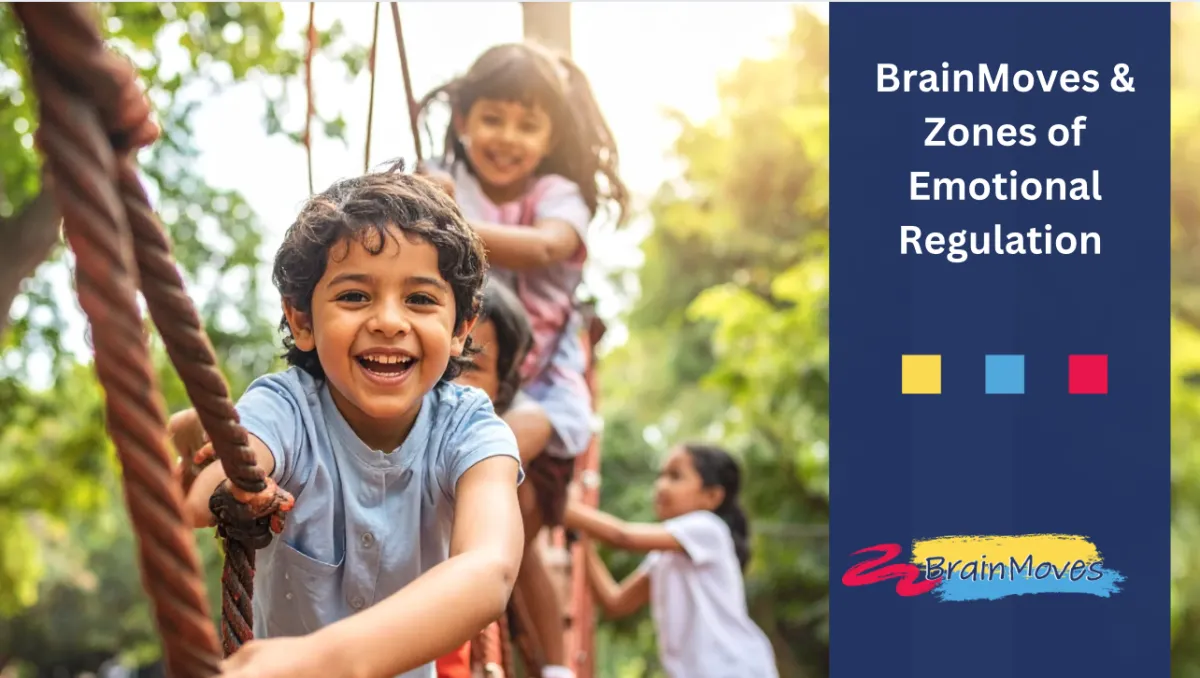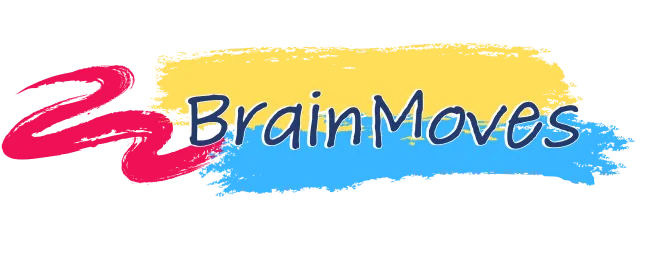
Emotional Regulation & BrainMoves
On the BrainMoves blog, we often talk about feeling more focused, more peaceful, more content, and more able to learn. A frequent topic of conversation among educators, parents, and those interested in neurodiversity is the concept of emotional regulation. Like many terms that have searchability, emotional regulation runs the risk of becoming clickbait and is not frequently defined.

Emotional regulation means developing emotions that are fully formed and can be identified, but are not extreme. It means that when an individual feels they’re reaching one of the polar edges of their emotional experience, they can bring themselves back to center.
This can be done through grounding activities, motions, and movements.
At its core, BrainMoves is all about emotional regulation and integrating the physical and mental experience. This is the reason why BrainMoves is so incredibly useful for preschoolers and kindergarteners, who sometimes lack the ability to express how they’re feeling except through their behavior. This is also why BrainMoves works fantastically for those with alexithymia, which is the inability to name or identify their emotions., Some individuals also find it difficult to identify which emotion causes the physical sensation in their body.
Emotional regulation can be measured, and there are a variety of different techniques. One of the simplest ones is the idea of Zones of Emotional Regulation. These zones of regulation are a technique that links body signals to colors, which can be especially useful for people who have a limited understanding of their emotions or a limited ability to explain their emotional condition.
The emotional zones are simple and defined by four colors: green, yellow, red, and blue.

BLUE ZONE: When someone is in the blue zone, they’re feeling heavy and may be moving slowly. They may feel stagnant. Their arms and legs may be cold, and they could have brain fog. This blue zone is associated with sadness, fatigue, boredom, sickness, and physical exhaustion. When someone is hurt, they may feel in the blue zone. Great BrainMoves for the blue zone are the Monkey, Polar Bear Cub and the Toucan.

GREEN ZONE: The green zone is our ideal area. Our body feels a comfortable temperature. Our muscles are relaxed. We feel focused and engaged and "in the zone." Students learn better in the green zone, athletes perform better in the green zone, and adults will find that parenting, work, and relationships feel easier when they’re in the green zone. Emotional words associated with the green zone include focused, happy, contented, calm, and even proud. When we do the StartUp Six from BrainMoves, we are engaging our bodies so that we can enter that green zone and do our best work and be our best selves. Other movements that help us stay in the green zone are the Giraffe, the Hedgehog and the Koala Cub.

YELLOW ZONE: The yellow zone is where we frequently find our hyperactive friends or ourselves. Our body is engaging in some nervous system activation. This could be anxiety or overstimulation, and I’m sure we have all had a friend who feels unable to sit still, with racing thoughts and racing ideas. We’ve all experienced a child who is wiggly, with a rapid heartbeat. They may feel warm and start removing their clothing, yet their muscles are tense. Sometimes they may be clumsy, dropping things, or feel unable to move comfortably. They could have difficulty focusing because so many thoughts are moving quickly through their minds. The yellow zone includes things we typically consider negative, such as stress, worry, or frustration, but also includes excitement and silliness. The point here is that when we or our child is in the yellow zone, it is a sign that we need to work on regulation, because the peak could lead us to extreme nervous system stimulation. This could lead to exhaustion, pushing us back into the blue zone, or to hyperactivity and even angry outbursts, pushing us into the red zone. It’s a high-energy place in the yellow zone, and we don’t want to live there permanently. Good BrainMoves movements for the yellow zone include the Racoon, the Parrot and the Kangaroo.

RED ZONE: The red zone includes body signals such as a rapid heartbeat or flushed skin. Our face may appear warm. If we are working with a child, they may be wearing fewer layers than appropriate for the season. There could be actual sweat, or the person could report feeling incredibly warm. Muscles will be tense despite that warmth—unlike when we exercise and our muscles become more relaxed. In this red zone, we could feel elated, overjoyed beyond words, or panicked, devastated, terrified, or angry. In general, the red zone indicates that our feelings are approaching the point of being out of control. Good BrainMoves movements for the red zone include The Skunk, the Bear Cub, and the Lion Cub.

I hope this review of emotional regulation has been helpful for you. Included in this week’s newsletter is a printout that you can use to help children or adults, including those with limited emotional vocabulary, or those who are minimally verbal, point to the color that best represents how they are feeling.
Are you ready to learn how to help yourself, your children, and your classroom regulate emotionally? Do you want to be more peaceful, have a quieter household, and help your child be more focused and ready to learn?You can start the BrainMoves online self-paced course at any time and have lifetime access to learning all of the BrainMoves that help with emotional regulation. These movements are easy to learn, can be performed without any extra tools, and can be done in almost any location that has a flat place to stand, sit, or lie down. Just five minutes a day can have measurable outcomes. BrainMoves is easy to learn and easy to use, and we hope it’s helpful for you and yours. You can start today by following this link.

